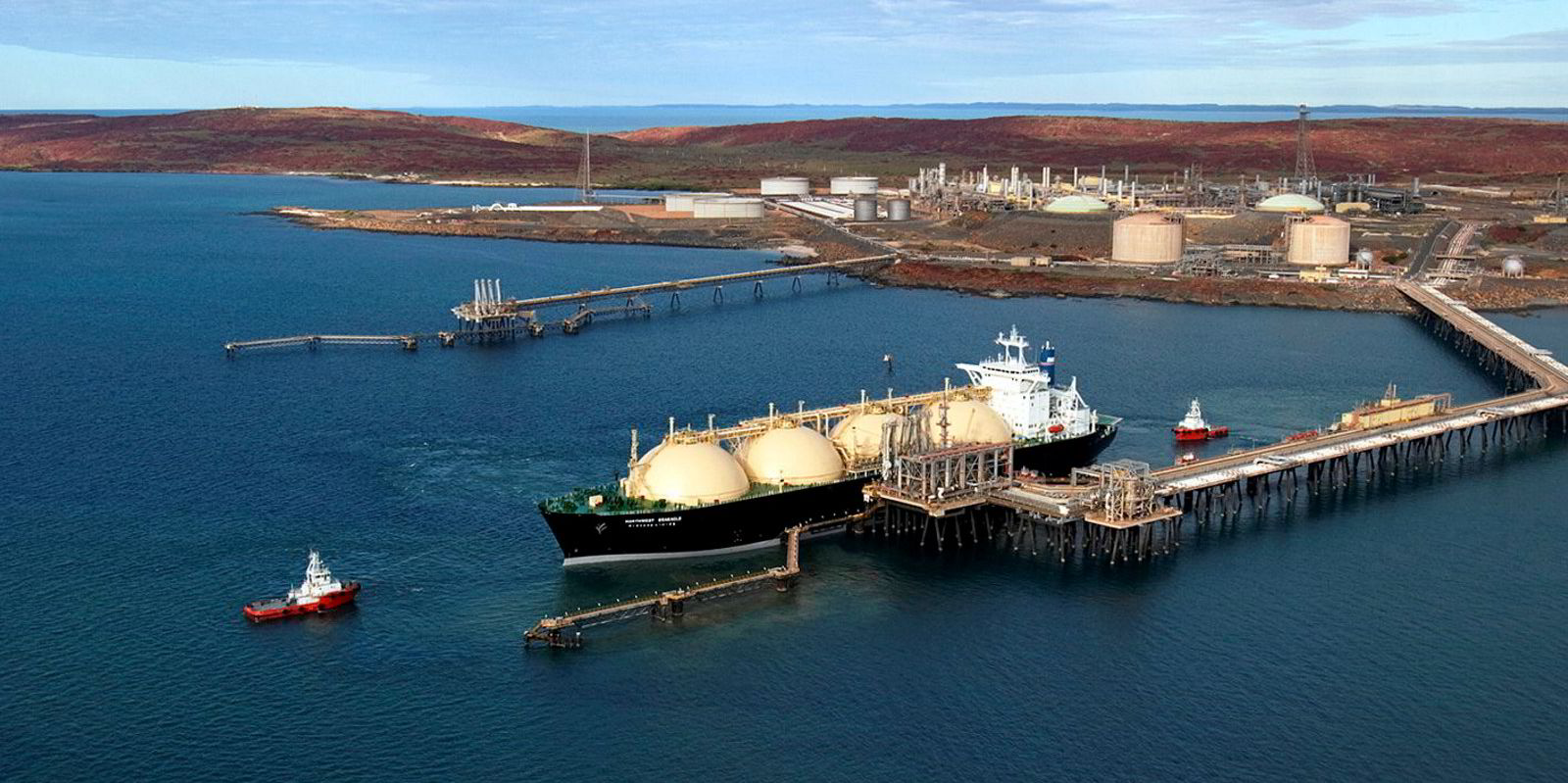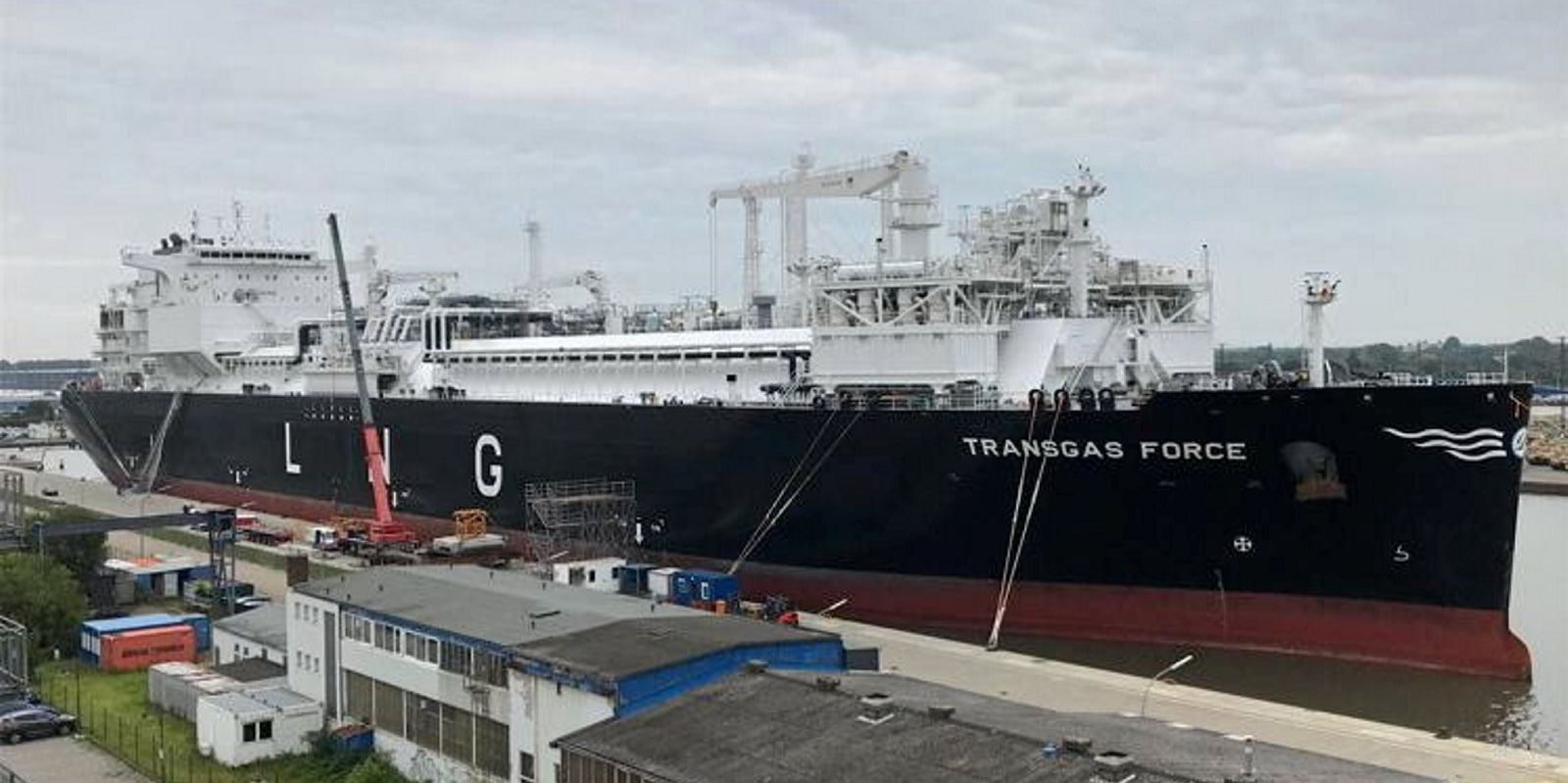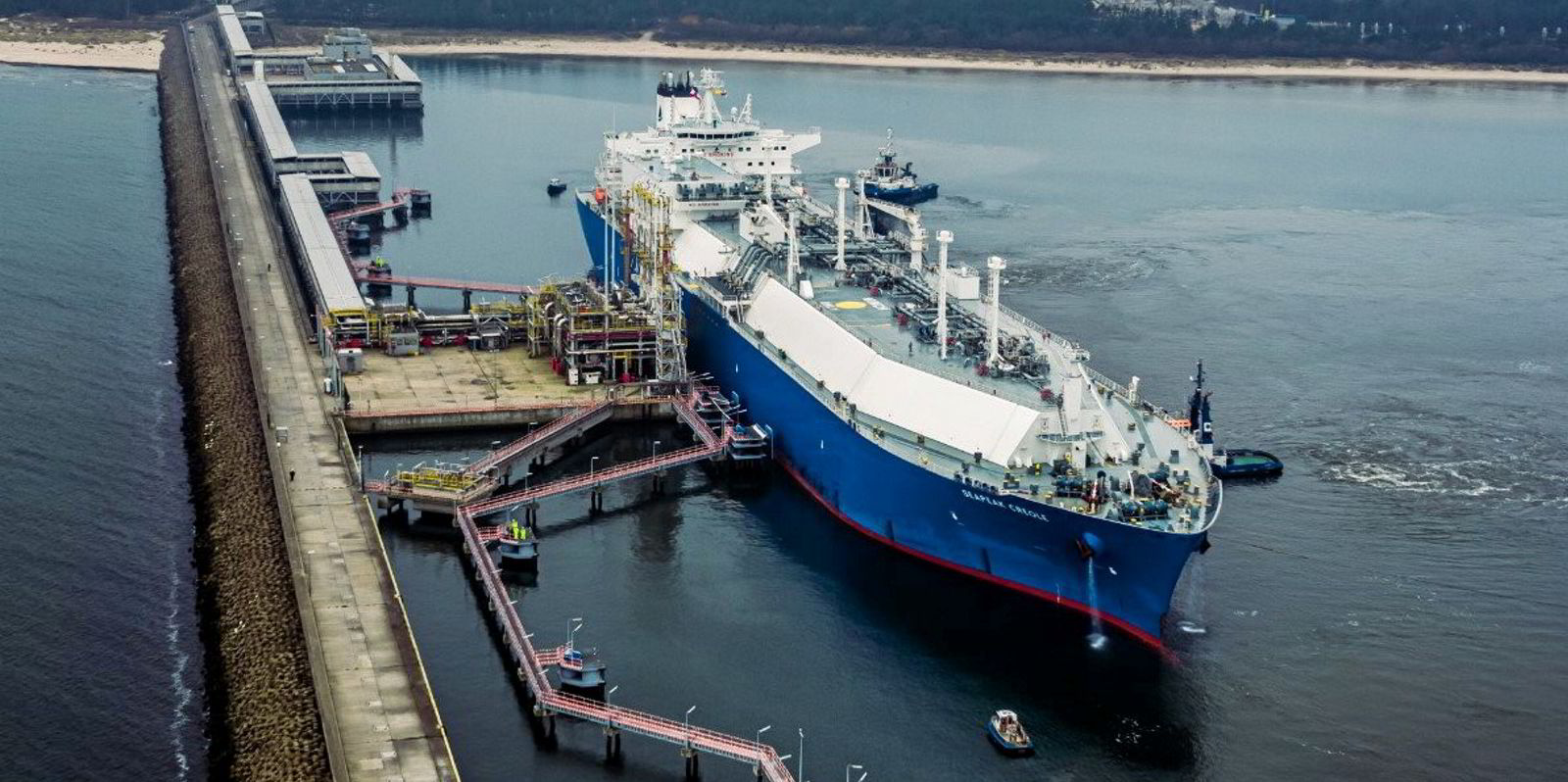Spot and term charter rates for LNG carriers have launched sharply upwards earlier in the year than might normally be expected as nerves are set jangling over the impact on supply from the threat of industrial action in Australia.
Owners and brokers said there are few firm fixtures being concluded to illustrate the market sentiment.
Shipbroker Braemar said that for those with prompt LNG carrier tonnage there is “little interest” in fixing at present, pointing to the relatively long tonnage lists for vessels that are immediately open with owners and operators preferring to hold for anticipated rate rises.
Brokers said the east remains “very tight” for LNG carriers with the west less so.
On Friday Spark Commodities Spark25 Pacific index was up $108,500 per day, a weekly rise of 27%. Similarly, its Spark30 Atlantic index climbed over the six-figure mark to $101,500 per day, up 12% on the week.
Brokers said two-stroke LNG tonnage in both basins are asking for levels in the $120,000 per day range.
Talk of industrial action at three LNG plants is causing both nervousness in the market and questions about the likely fallout.
The strike threats ramped up a notch in the last few days with unions at Woodside Energy Group's North West Shelf announcing possible action from early September.
A union alliance for workers at Chevron’s Gorgon and Wheatstone LNG plants plans to take a vote on strike action by 24 August this week.
The three liquefaction facilities supply around 10% or 41 million tonnes of LNG to the global market with the bulk of these shipments going to buyers in Asia.
There are concerns that any move to strike action could force the closure of the three plants causing disruption to LNG trade volumes which has pushed up LNG prices to their highest levels since March. But it is unclear how long this could last as it could prove reputationally damaging to Australia as an LNG supplier.
Russian supply
The heightened nerves over Australian LNG supply come as figures from China’s General Administration of Customs show that Russian LNG imports to China rose by 62.7% to 4.5 million tonnes in the period from January to July this year. The figure compares to 2.7 mt in the same period of 2022.
But Australia is still China’s largest supplier of LNG supplying the country with 13.5 mt in the first six months of this year.
In Europe – which is still supplying around 15% of its gas needs from Russian LNG - the fresh concerns over industrial action coincided with the region reaching its required 90% levels of gas in storage late last week, way before the 1 November deadline it had set for this
European energy commissioner Kadri Simson said on Friday: "Today's confirmation that we have met our gas storage requirements so far ahead of schedule underlines that the EU is well-prepared for winter and this will help to further stabilise markets in the coming months."
But LNG market players said that despite the apparent preparedness in Europe, a cold winter could quickly draw down stocks with buyers scared by last year’s sudden withdrawal of Russian pipeline gas which sent LNG prices and shipping rates soaring.
Today gas price jumped in “volatile trading”.
While Australia is the world’s second largest LNG exporter, it exports little to Europe. However, if any strikes affect supplies to Asian buyers then the region could be forced to buy from further afield increasing competition for cargoes over the period of high seasonal demand.






